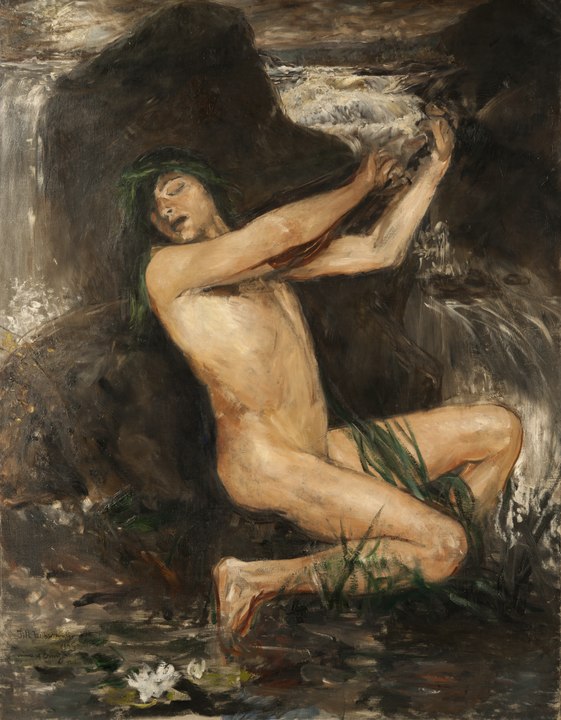Nordic folklore
As you might know, if you have read my introduction, I am a Swedish writer. I also have family in neighbouring Norway, and have grown up with the lore of both countries.
For most people writing fantasy, fantastical creatures are part of the genre. We have orcs and dragons and goblins. But as any veteran fantasy reader knows, repeating the same patterns soon gets old. As fantasy writers, we want to think outside these old, tired tropes and create something new; something that hasn’t been done before. One way of doing that is going back to our roots and scrutinising what was there before we came along.
Tolkien famously came up with his own take on elves and the dwarves — figures that have been present in one shape or another in many European folklore traditions. He made the elves beautiful and the dwarves wide-shouldered and bearded. J.K. Rowling took the legends of witches and wizards and brought them into the 20th century. She discarded Tolkien’s idea about tall, ethereal elves and went back to the old tales about shy and gnarly little creatures.
Patrick Rothfuss explored the old Celtic myths about fairies and put his own spin on the Fae realm, its inhabitants and laws of nature. Naomi Novik, of Lithuanian and Polish descent, drew on her grandmother’s tales from Eastern Europe to create her own interpretation of the Baba Yaga legend, cursed forests and powerful wizards in her book Uprooted.
Näcken, Ernst Josephson, 1905
Wikimedia Commons
As a teenager, I realised I had grown up with remarkably few books about the brothers Grimm’s German fairy tales, and all the more books about the legends and superstition of the old days of Sweden and Norway. Thus, I have a whole bottomless, cultural well of creatures and tales most of the English-speaking world has never heard of. I could write endless interpretations and twists of these old stories and the creatures in them.
But the question is: Do I want to?
How do you translate the names of these legendary beings into English without losing their identity? Näcken (The Nix) is a male figure, usually seen sitting naked in waterfalls playing the fiddle till your heart breaks.
Tradition says women (presumably straight ones) are prone to falling in love with him, while men (also presumably straight individuals) desire to learn his musical skills. Both genders lose their heads and fall prey to the supernatural predator. But the name, Näcken, holds so much more than the translation can convey. To be ‘näck’ translates to being in the nude. ‘Näcken’ is both a name and a descriptor.
Näcken can shape-shift, too, and transform into a horse. Some people state he’s white as snow; others say he’s black as night. Regardless, his name in this shape is Bäckahästen. It means ‘Brook Horse’, but the name ‘Bäckahästen’ also has sounds in common with the name ‘Näcken’, which always seemed important to me as a child. Using the names ‘The Nix’ and ‘The Brook Horse’ just doesn’t pack the same punch.
Furthermore, we have creatures like the alv or alf (elf), but also the älva, sharing the same etymological root but referring to vastly different creatures. The alv was male — a smallish, mischievous trickster — while the älva was a female fae-like being, half transparent and usually only seen in groups, dancing in mist.
Norwegian lore has Kvernknarren, which translates to ‘The Mill Creak’ — and yes, that is ‘creak’ as in making a creaky sound. The Mill Creak was a large creature living in the millwheel, making funny creaking noises and trying to trick small children to fall into its maws.
Askeladden and the Troll,
Theodor Kittelsen
Wikimedia Commons
Norway is a country of coastlines, fjords and islands. They have plenty of tales related to the sea. One of the most famous sea monsters is Draugen, who is an undead human-like figure with rotting strips of meat hanging from his exposed bones.
According to the old tales, he would sometimes show up in storms — either in a boat with torn sails or in half a boat. His appearance would be a premonition of death. In some stories, he would even rise from the depths to pull fishermen off their boats. These poor men would never be seen again. ‘Draug’ is the modern Icelandic word for ‘ghost’, but in Old Norse, ‘draugr’ could mean any kind of undead person — often in their physical body, intact or decayed.
Perhaps the most famous creature from the Scandinavian folklore is, of course, the troll. Tall or small, smart or dumb, human-like or monster-like; they come in all flavours depending on the story. The one we’re most familiar with is the mountain troll: large and dumb and with moss for hair, it turns to stone if the sun’s rays touch it.
I do, however, also like the types of trolls who look almost exactly like humans and live in mountain halls almost exactly like human dwellings. They are found in tales such as those about bytingar — troll children exchanged for human ones so that the troll mother could raise a human child instead of a troll child, granting her status and power in the troll society. The troll raised among humans, on the other hand, would often grow up to be a vile person, quick to anger and harbouring ill will towards both humans and beasts.
These characters and more are rich sources of inspiration and ideas. That is, if I decide I do want to write them.



